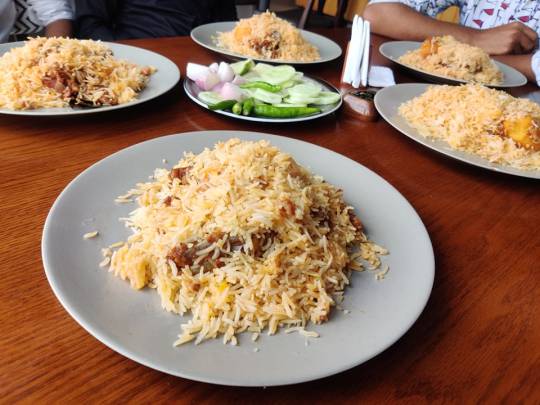What’s up, I’m Linkon. I’m an Off-page/On-page SEO expert living in Dhaka, Bangladesh. I am a fan of technology, SEO, and friendship. I’m also interested in design and video games. You can back my campaign with a click on the button above. So, I can SEO for your website or blog site. I am interested in doing work on SEO. I am working on SEO last 5 years. On the other hand, I am a student of IUBAT in Dhaka, Bangladesh.
Don't wanna be here? Send us removal request.
Text
8 Ways to Properly Promote Your Business on Social Media

Social media is now playing much larger roles in our lives than it did decades ago, and one of those essential roles is social media promotion. In truth, any marketer or business owner that has not already jumped on the social media bandwagon is way behind the times. Social media promotion has revolutionized the traditional approaches to marketing businesses so that almost everything is now digitized and operations can even be conducted from devices like phones and laptops.
A key element of promotion that social media has majorly streamlined is communication. Businesses no longer have to send out one-way messages to clients and wait for ages to get back replies or no replies at all.Through social media platforms and messaging, there is a newfound speed and simplicity to business correspondences, and reaching out to potential and intending clients to promote products and services has never been much easier.
Now that millions of businesses are conducting their operations and pushing their brands on social media sites, only the businesses that are doing social media promotion the right way can succeed standing on the benefits that the phenomenon presents. Therefore, if you are looking to create more visibility for your brand and propagate a growth in revenue through increased customer patronage for your business using social media, you must take an appropriate approach to achieve this. In light of this, here are 8 ways to properly promote your business on social media. And don’t let the idea intimidate you because it’s all a lot easier than you think!
1. Start with a Goal.
A journey without a destination is no journey at all, but an aimless roaming around and a pure waste of time. In this same vein, plunging into social media marketing without starting out with set goals is a foolproof recipe for disaster.
Goals are very important because they help you know, business-wise, where you stand currently, where you want to get to, and how you are going to get there. Thus, having clear and distinct goals makes it easier for you to shape your social media content to achieve these goals.
Are you looking to boost your business’ patronage? Rack up the number of viewers or increase the reach of your content? Increase the revenue coming into your business by making direct sales on the social platforms? Develop strong customer relationships?Or create awareness to the public on important subject matters in the environment?
These are some excellent goals to base the construction of your business profile(s) when promoting on social media. For business objectives, you can create attractive posts about the products you sell, post captivating video content to share sufficient info about a service, give your followers content that showcasesthe nature of your brand, publicize business events like promotional sales, and so on. For awareness purposes, you can provide content that educates, informs, and entertains (all at once if possible!), and engage in intellectual discussions with people so that everyone can learn from one another.
2. Decide Which Platforms You Want to Focus On.
There are several social media platformsand forums on which you can opt to promote your business on. In fact, their number is ever-increasing!This is because, currently, there is a general awareness of the importance of social media promotion and communication in the business world, and the discovery of a secondary demand for niche-based platforms and forums so that distinct communities of people having similar interests can connect and interact with one another in spaces designed especially for them.
When deciding which platforms you want to focus on in terms of marketing your brand or business, you should take your customers and the nature of your business into account. Where can your target audiences be found majorly? Such platforms are where your major business profiles should be set up so you can easily connect with potential clients and them with you. Conducting research using social media demographics can help you figure out what social media sites these should be.
In addition, which sites will suit your products and the kind of content you wish to post best?For instance, if you own a hair care line of products and want to broadcast tutorial videos for your buyers on the best ways to use the products, then YouTube is an obvious choice.
The most popular social media platforms for brand development and marketing today are Facebook, Twitter, Instagram, LinkedIn, Pinterest, YouTube, and most recently, Tiktok. Thus, you can choose the best ones for you based on the nature of your business and the kind of content you’re set on publishing.
3. Get to Know Your Audience.
Another reason why using social media promotion is so effective is that businesses can micro-target their audiences. To do this, you have to get to know your audience first.
Start by noting the patterns among your current customers. You can do this easily by making use of social media analytics tools to track, collect, and analyze relevant trend data on customer behavior towards your social media accounts. With this sort of valuable information, you can then tailor your content to keep your customers loyal and engaged and maximize the appeal of your business to anyone who comes across your profile.
For example, if you find out through analytics that your customers or target audience are majorly active between 7:00pm and 8:00pm, then that is the exact period within which you should have your new posts put up. Some social media sites like Facebook and Instagram have inbuilt analytics tools, but you can also find many other social media analytics apps and online tools that canprovide you with this kind of data.
Additionally, as a business looking to encourage more patronage from your audience, it will also work in your favor if you are able to influence the patterns and decisions of your potential customers. Present yourself to them as an authority in whatever industry you operate under by displaying elevated levels of knowledge and expertise through your content, and you will find that people will increasingly begin to pay rapt attention to anything you have to say to them. From this, you can also successfully build a devoted community around your brand that will only continue to grow over time.
4. Stalk Your Competitor or the Brands You Like.
Yes, you read that right. You must research every move that your competition is making on their social media to know what they are doing right and how to do it better, as well as what they are doing wrong and how to avoid doing the same. While you’re certainly not looking to copy anyone, observing what your competition is doing is a quick and efficient way to learn what willwork for a business like yours and what won’t.
This doesn’t only apply to your competitors but also to the brands that you like and look up to. Take examining their social media promotion techniques as a form of inspiration to help you generate unique and failsafe ideas for your own profiles.
5. Create a Social Media Calendar.
A mistake that many businesses on social media often make is either leaving it till the last minute to figure out what they are going to post or making unscheduled and unplanned posts. This, more often than not, leads to them putting out low-quality content. Absence of pre-planning can result in more mistakes like repeated posts or forgetting to remain active on one of your accounts.
A simple remedy is to create a social media calendar. This type of content calendar helps you avoid making mistakes and properly preparethe right things to post.It also serves as good assistant forbuilding solid strategies that will enable you meet your goals.
To make a social media calendar, you can make use of a regular notebook or planner, or even a standard calendar to pre-organize your content. What you can plan out includes yourwrite-ups or multimedia content, captions, hashtags, links, and the likes.
Remember that while having a pre-planned posting schedule will prove the most beneficial for your business on social media, spontaneity still has its perks. Real-time interaction with your customers breathes life into your business so that people know that they are dealing with much more than just a page on the internet.
6. Create Engaging Social Content.
Whatever your social media goals may be, getting people to engage with your content will always help you achieve them. Using the customer trend data that you gather from analytics tools, you can achieve high levels of engagement by molding content that people want to see.
Also, don’t forget to switch up the format of your content. There’s so many formats to choose from: informative messages or articles, inspirational quotes, eye-catching images, interesting video content, funny GIFs, and so much more. Social media platforms today also offer novel formats that you can take full advantage ofin putting out highly engaging social content, like Facebook Stories, Instagram Live videos, Twitter Polls, YouTube Shorts, and so on. Regardless of what you opt for, planning with a content calendar will help you keep all your content at its best.
Another remarkable way to optimize your content, social media profiles, and business sites to encourage maximum engagement from audiences is to work with an exceptional digital marketing agency. We at Lamar G Marketing Tree offer first-rate services and strategies that will have you hitting all of your promotional goals in no time! Our services include:
Website Design.
SEO Planning.
Social Media Strategy.
Visit our website today to discover that your business can be so much more with the right professional and promotional touch.
7. Audit What’s Working.
It is very important that you monitor the performance of your content and posts, and then make use of regular analyses to refine your social media publications so as to get better reception from your audience.Luckily, there are many online analytics tools available to help you gauge the success of your social media marketing efforts.
With every promotional effort you make, you must always work to give maximum value. Always ask yourself, “How can I add more value?” This is one of the biggest secrets to building stellar customer relationships and attaining high customer retention.
Your focus, however, should not only remain on your repeat customers but should be equally divided between that and obtaining new clients.
8. Audit What Doesn't Work.
In the same way that you retain and improve on what’s working, you must also watch out for what promotional content and strategies may not be doing so well in meeting the goals and expectations that you have set. It’s okay to go back to the drawing board and start afresh, reevaluating the things you were doing before and how you can change them so that your promotions can do better.
Be careful not to over-promote. Besides trying to make sales, your content should also be more entertaining for your audience so they are not put off by you selling yourself too hard.
And hopefully, you always get positive feedback from your audience. However, if you happen to receive any negative response, you should quickly and carefully address the situation. A little public apology or a kindly offered solution can oftentimes turn an upset customer into an applauding patron.
Also Read: South Florida Digital Marketing Agency
#digitalmarketing#socialmedia#socialmediamarketing#digital marketing#seo services#affiliate marketing#marketing#marketingstrategy#digital marketing agency
2 notes
·
View notes
Photo

Get More Website Traffic with Fully Managed, Advanced SEO Services There’s some #SEO in everything you do online. But that doesn’t mean everyone needs the same #SEOservices. Build your search engine optimization foundation with the trusted experts. We offer the right plans and strategies that match your exact needs. 📞 Contact Now: 01734097975
Visit Our Page: SEO Service Provider
#searchengineoptimization #digitalamarketing #seoexpert #seostrategy #seoagency #seocompany #seospecialist #seoaudit #marketingadvice #ranking2021 #smallbusinessmarketing #smallbusinesshelp #smallbusinessgrowth #seoconsultant #seomarketing #seooptimization #seocontent #seoserviceprovider
0 notes
Text
Thai Airways | Thai Airways Dhaka Office, Bangladesh Contact Info

Thai Airways Dhaka International Public Company Limited, which trades as THAI (Thai: บริษัท การบินไทย จำกัด {มหาชน}), is a flag carrier airline in Thailand. Formed in 1986, the airline has its corporate headquarters at Vivavadi Rangsit Road, Chatuchak District, Bangkok, and operates its flights primarily from Suvarnabhumi Airport. Thai is a founding member of the Star Alliance The airline is the largest partner in low-cost carrier Knock Air with a 49% stake It launched a regional carrier called Thai Smile in mid-2012 using the new Airbus A320 aircraft.
From its hub at Suvarnabhumi Airport, Thai uses a fleet of 60 aircraft, providing flights to 7 destinations in 35 countries. The airline once operated two of the world's longest non-stop routes between Bangkok and Los Angeles and New York City. But due to high oil prices, flight withdrawals, luggage weight limits, and rising airfares, the airline abandoned all non-stop U.S. services indefinitely in 2012. As of 2013, the airline between Bangkok and Los Angeles is Incheon near Seoul. International airports are served through Thailand's route network is affected by flights to Europe, East Asia, South / Southwest Asia, although their flights serve five cities in Johannesburg and Oceania in South Africa. That was the first Asia-Pacific aircraft to serve at London Heathrow Airport. Among Asia-Pacific carriers, Thailand provides the largest passenger service in Europe.
Thai Airways History:
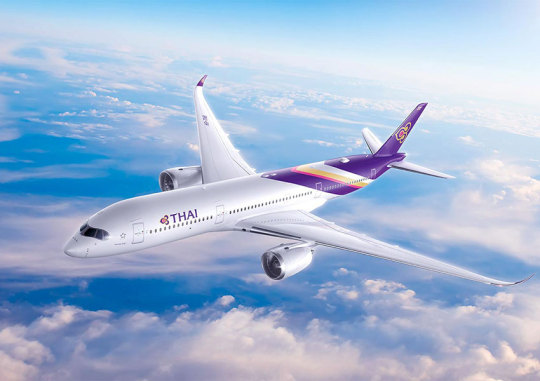
Thai Airways originated in 1960 as a joint venture between Scandinavian Airlines (SAS) and Thailand's domestic carrier, Thai Airways Company. The purpose of the joint venture was to create an international wing for the domestic carrier, Thai Airways Company. SAS also provided operational, managerial, and marketing skills, along with training assistance, to build a fully independent national airline in the shortest possible time. Through training and experience, Thai citizens gradually became able to take on approximately full managerial responsibilities. The number of expatriate workers decreased exponentially, with less than one percent of expatriate workers based in Thailand in 1986.
The first flight of their career from which they earned their income was on May 1, 1970 Their flights are operated from Bangkok to nine foreign Asian destinations Their first intercontinental service began in 1971 in Australia and the following year in Europe. The North American service began in 1970
On April 1, 1986, 16 years after the capital was acquired by SAS, the Thai government bought the remaining 15% of the SAS-owned shares, and Thai became a wholly state-owned airline.
The Establishment of Thai International:
Thai International was founded in 1960 as a joint venture between Scandinavian Airlines (SAS), which held a 30 percent share of the new company valued at two million Thai baht, and Thailand's domestic carrier, Thai Airways Company. The purpose of the joint venture was to create an international component for the domestic carrier Thai Airways Company.[citation needed] SAS provided operational, managerial, and marketing expertise, with training aimed at building a fully independent national airline in the shortest possible time. Thai nationals were gradually able to assume full managerial responsibility and the number of expatriate staff duly decreased, with expatriates accounting for less than one percent of staff based in Thailand in 1987.
The carrier's first revenue flight was on 1 May 1960, with flights to nine overseas Asian destinations from Bangkok.
A Thai McDonnell Douglas DC-10, Frankfurt, 1977
The airline's first intercontinental services using Douglas DC-8s started in 1971 to Australia, and then to Europe the following year. A number of the larger Douglas DC-10 wide-body tri-jets was acquired in the late-1970s. Services to North America commenced in 1980.
On 1 April 1977, after 17 years of capital participation by SAS, the Thai government bought out the remaining 15 percent of SAS-owned shares and Thai became a state-owned enterprise of the Thai government. As of 22 May 2020, the Thai Ministry of Finance is no longer the majority shareholder, having reduced its holding to 47.86 percent from 51.03 percent.
The 1980s and 1990s: merger with Thai Airways Company
On 1 April 1988, then-Prime Minister Gen. Prem Tinsulanonda, merged the international and domestic operations of the two companies to form the present company, Thai Airways International, to have a single national carrier. On 25 June 1991, the reconfigured company listed its shares on the Stock Exchange of Thailand and offered them to the public. The Thai public offering of shares is the largest ever undertaken in the country.
In 1997 Thai Airways planned a privatization program, the first in Thai history.
On 14 May 1997, THAI, along with Lufthansa, Air Canada, SAS, and United Airlines, founded the world's first and largest airline alliance, Star Alliance.
The genesis of Thai's later financial difficulties has been attributed to actions taken in the 1990s when Thai Airways began "buying every type of plane that was being manufactured." Different models meant that the airline had to train an army of technicians to keep differing airframes and engines from both General Electric and Rolls-Royce airworthy, significantly inflating maintenance costs.
Thai Airbus A300, Phuket Airport, 2008
The 2000s: Airline brand renewal and financial difficulties
In the first decade of the 21st century, Thai Airways continued its route network expansion with new services to Chengdu, Busan, Chennai, Xiamen, Milan, Moscow, Islamabad, Hyderabad, Johannesburg, and Oslo.
Using the Airbus A340-500 fleet it acquired in 2005, Thai commenced non-stop flights between Bangkok and New York, its first non-stop service to North America. The airline later converted an existing one-stop service (via Tokyo) to Los Angeles into a non-stop flight using the same aircraft type. Citing very high fuel costs, Thai discontinued the New York service in July 2008, even though the airline had been able to fill 80 percent of the seats. The service to Los Angeles was again reverted to a one-stop service via Seoul on 1 May 2012, leaving the airline without a non-stop service between Thailand and North America. The A340s used were phased out, replaced by the Boeing 777-200ER for the Bangkok–Seoul–Los-Angeles route. Although the previous A340 used for non-stop services was not subject to ETOPS, the phasing in of the 777 with one-stop service (with the 330-minute rule) will be indefinite for years to come; the airline has no plans to pursue newer North America destinations or purchase the Boeing 747-8 for trans-Pacific routes since is operating the Airbus A380.
The 2000s also saw Thai expand its Thai airport network beyond its Bangkok hub. The airline launched non-stop flights from Phuket to Tokyo–Narita, Seoul–Incheon, and Hong Kong.
During the late-2000s, Thai's growth was hampered by a combination of internal and external factors, including a spike in fuel prices, domestic political conflict in Thailand, and the global economic crisis of the late-2000s. In 2008, after achieving profitability for the previous 40 years, Thai recorded a loss for the first time in its history of around 21 billion baht (US$675 million). The airline blamed high fuel costs and Thailand's political turmoil. As of Q2 2009, after a series of restructuring initiatives, including a two-year deferral of its Airbus A380 deliveries, the carrier returned to a net profit of 2.5 billion baht.
Thai's need for reform became evident in the first decade of the 21st century, but reforms, when they came, were invariably cut short. Thai's problems were threefold: ineffective leadership at the top; inexperienced boards; and a coddled union. Piyasvasti Amranand took Thai's helm in October 2009 after serving as energy minister. At Thai, he is still regarded as a true reformer, imposing salary cuts for senior executives as part of his drive to reduce costs. He was voted out by the board in 2012 for what may have been political reasons. The board of directors was, after the 2014 Thai coup d'état, packed with military brass. Five civilian members were purged and replaced with five Royal Thai Air Force (RTAF) generals, as was the board's chairman. The appointments ended Thai's policy of only appointing technocrats to the board. Three RTAF generals remain on the 2020 board; they have no experience running listed companies or restructuring loss-making airlines. Concomitantly, employees at Thai enjoyed an overprotected status. Salary increases based on length of employment led to senior captains earning more than the CEO.
The 2010s: Fleet renewal and route expansion
While celebrating its fiftieth anniversary in 2010, Thai, led by its president, Piyasvasti Amranand, drafted new plans for the airline's future, including aircraft fleet renewal and an upgrade of existing services. Thai placed orders for a number of aircraft, including the Boeing 787 and Airbus A350, and it launched a refurbishment of its Boeing 747 and 777 cabins. Mindful of rising fuel costs, the airline phased-out its most inefficient aircraft, including its Airbus A340-500s. The airline took delivery of its first Airbus A380 aircraft in the second half of 2012, intending to eventually deploy the aircraft on its core European routes.
THAI resumed network expansion with the resumption of flights to Brussels, in addition to a new non-stop flight from Stockholm and Copenhagen to Phuket. At the same time, the Greek debt crisis caused Thai to suspend its services to Athens.
Thai expects to be the first carrier in Asia to fly commercial flights using biofuels. The carrier launched the initiative with experimental flights in December 2011 as part of its Corporate Social Responsibility program, otherwise known as "Travel Green". Thai hopes to stimulate sustained biofuel production in Thailand by working with Thai government agencies and regional corporate partners, such as PTT Public Company Limited. The effort aims to reduce carbon dioxide emissions in regional air travel as well as position Thailand to be the "bio hub" of Asia.
In April 2015, after an audit of the Thai Department of Civil Aviation, Thailand was downgraded from Category 1 to Category 2 due to negative audit results from the International Civil Aviation Organization (ICAO). On 1 December 2015, the US Federal Aviation Administration (FAA) announced their reassessment of the safety rating for Thailand, downgrading it from a Category 1 to Category 2 country. The FAA stated, "U.S. and Thai aviation officials have a long-standing cooperative relationship and both our countries work continuously to meet the challenge of ensuring aviation safety. A Category 2 International Aviation Safety Assessment (IASA) rating means that the country either lacks laws or regulations necessary to oversee air carriers in accordance with minimum international standards, or its civil aviation authority—a body equivalent to the FAA for aviation safety matters—is deficient in one or more areas, such as technical expertise, trained personnel, record-keeping, or inspection procedures. With a Category 2 rating, Thailand's air carriers can continue existing routes to the United States but they won't be allowed to establish new routes to the United States."
The European Aviation Safety Agency (EASA) declined to blacklist any Thai carriers following a review of certain carriers in November 2015. Thai later received third-country operator (TCO) certification from the EU, effective 15 December 2015, authorizing the carrier to continue flying to the EU for the foreseeable future.
In July 2015, Thai announced the planned cancellation of service to Los Angeles after 25 October 2015, marking the end of US service.
In June 2016, as a result of its restructuring plan, Thai announced it would commence thrice-weekly Tehran service. However, the service ended on 28 February 2018 and resumed Moscow service from October and November 2016 respectively. The airline also considered a return to the US using Boeing 787-9 by 2017. However, Charamporn Jothikastira, THAI president, turned down the possibility of returning to Los Angeles or New York City due to losses in the past. Instead, Thai considered other cities such as San Francisco and Seattle. While Thai Smile, its subsidiary, is planning for new regional routes such as Cebu, Medan, Surabaya, Chandigarh, Shantou, and Tianjin.
In August 2016, Thai introduced a new route network management system. Following implementation, flight schedules were synchronized, allowing international passengers to transit via Bangkok Suvarnabhumi more conveniently. Thai planned to adjust 13 route schedules mainly in Japan, Australia, and India. The routes that have been announced are Perth and Brisbane.
Related Post: Singapore Airlines Dhaka | Bangkok Airways Dhaka
Queries handled by Thai Airways Bangladesh Customer care:
Thai Airways Ticket Booking, Ticket Cancellation, Flight Ticket Rescheduling, Ok to Board, Visa Services, Online Check-in, Baggage Allowance, Duty-Free Allowance, Flight Information, Airport Lounges, Visa Information, In-Flight Meals, Airport Transfers, Missing Luggage, Immigration Services, Valet Parking, Meet and Greet, Flight Wifi, Airport Wifi, In-Flight Entertainment, Airport Facilities, Delayed Flights, Visa on Arrival, First Class, Business Class, Economy Class, rewards.
Thai Airways Cabin services:
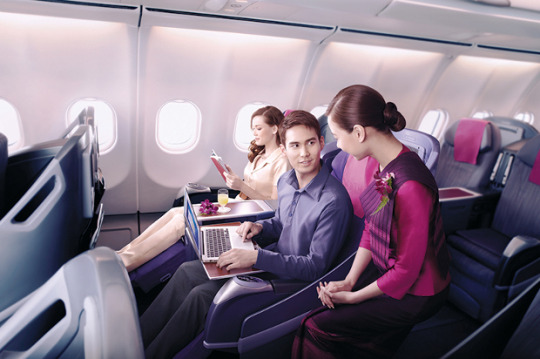
Royal First Class (First Class)
Thai's Royal First Class seats, manufactured by B/E Aerospace, were introduced with the arrival of the Airbus A340-600. These seats are also available on selected Boeing 747-400 aircraft. A new version of Royal First Class seating in a suite or enclosure configuration is available on Thai's Airbus A380-800 aircraft and select Boeing 747-400 aircraft since the 2012 refurbishment.
Royal Silk Class (Business Class)
Thai's Royal Silk Class seats have been installed on all Thai aircraft. The angled shell design seats have 150 to 160 cm (58 to 62 in) of pitch and a width of 51 to 55 cm (20 to 21.5 in). Prior to refurbishment, Royal Silk seats on 777-300ERs are sold as premium economy class seats on Scandinavian routes and Moscow. A new set of Royal Silk seats are available on THAI's Airbus A380-800s, Boeing 777-300ERs, Boeing 787-8s, and Airbus A350-900s. After the delivery of the new 787-9s to THAI, the Zodiac Cirrus or Reverse Herringbone seats are now available onboard the new aircraft.
Economy Class
Thai's Economy Class offers between 81 and 86 cm (32 and 34 in) seat pitch depending on the aircraft type. Personal screens with AVOD are present on the Airbus A380-800, Airbus A330-300, Airbus A350-900, Boeing 747-400, Boeing 777 (200ER, 300 and 300ER), Boeing 787-8/-9 aircraft.
Thai Airways Destinations:
Thai Airways operates flights to 10 destinations nationally, excluding Bangkok, and internationally to 71 destinations in 33 countries worldwide. Thai Airways' top sector routes include Phuket to Bangkok, Bangkok to Phuket, Bangkok to Chiang Mai, and Tokyo to Bangkok with 8, 64, 60, and 55 weekly flights respectively.

THAI Airways flies to 78 destinations including Ahmedabad, Amsterdam, Auckland, Bangladesh, Bangkok, Brisbane, Chengdu, Changsha, Chennai, Chongqing, Delhi, Da Nang, Denpasar, Dubai, London, Madrid, Mae Hon Son, Mae Sot, Nakhon Si Thammarat, Nagoya, New York, Phrae, Phuket, Riyadh, Sajon Nakhon, Sapporo, and many others. Domestic destinations include Chiang Rai, Chiang Mai, Bangkok, Udon Thani, Khon Kaen, Ubon Ratchathani, Samui, Surat Thani, Phuket, and Krabi.
Thai Airways Dhaka Sales Office:

Airlinesbd is the authorized sales agent of Thai Airways Dhaka, Bangladesh office. The main office of Thai Airways Bangladesh is located at Kamal Ataturk Avenue, Banani, and Dhaka, Bangladesh. Airlinesbd.com is one of the leading travel agencies in Bangladesh from where you can buy low-cost airline tickets. You will be able to process air tickets, hotel bookings, holiday packages, and visas for travel to any country in the world at affordable rates from other travel agents in the country.
Airlinesbd.com Ticketing
01841-289170
01713-289177
Thai Airways Dhaka Office Address
Address:
Thai Airways International PCL,
Shanta Western Tower, Level-9, Space-903,
186 Bir Uttam Mir Shawkat Ali Road, Tejgaon I/A,
Dhaka-1208, Bangladesh
Contact Number
+88 02 8879131-46
Fax Number
+88 02 8879147-49
Email: [email protected]; [email protected]
Official Website:
www.thaiairways.com
Thai Airways Dhaka Airport Office
Address:
Hazrat Shah Jalal International Airport,
Terminal 1, Kurmitola, Dhaka, Bangladesh
Contact Number:
+88 02-8901807
+88 02-8901809
+88 02-8901812
Fax Number
+88 02-8901813
Email: [email protected]
Baggage
The weight allowance has been introduced by THAI for a journey:
Wholly within Thailand domestic sectors
A journey within TC3 (Asia, Australia, and New Zealand) and a journey between TC2 (Europe, Africa, and the Middle East) and TC3 (Asia, Australia, and New Zealand).
The piece concept used to apply for a journey:
To/from the USA and Canada. If you are traveling on THAI flights for your entire journey, details of the free baggage allowance of each of the above mentioned are published below:
Checked Baggage Policy by Weight Concept applicable to Purely Domestic Sectors:
Checked Baggage Policy by Weight Concept applicable to International Sectors within TC3, Between TC2 and TC3
In-Flight Information
Some of the onboard facilities provided by Thai Airways include hot meals, seat options for a small fee, entertainment, and duty-free merchandise. Bassinets on selected aircraft including A330. You can pre-order your meals while making Thai Airways booking online at least 24 hours before your scheduled flight to get a wider selection of meals.
Thai Airways TV
Find pre-selected TV shows onboard your Thai Airways flight.
Thai Airways Movies
Movies and much more can be found onboard your Thai Airways flight.
Thai Airways Important F & Q
What documents do I need to present at check-in?
For Domestic flights:
Identity card, government official identity card with photo or passport must be presented for adults.
Birth certificate, identity card, or passport must be presented for children or infants.
For International Flights:
Passengers must hold passports with a validity of at least 6 months beyond their intended return date, or valid passports and visas meeting the requirements of the country visited. For visa and passport requirements, contact the Consulate or Embassy of the country you are planning to visit. A return ticket or proof of onward travel needs to be presented at check-in.
**THAI has the right to refuse copies of travel documents**
Which items are prohibited in checked and carry-on luggage?
International law prohibits the placing of magnetized, Inflammable, corrosive, radioactive, oxidizing, or explosive articles; pressurized gasses, toxic substances, oxygen cylinders, paint, mercury, munitions, fireworks, and power bank in checked or unchecked (carry-on) luggage.
In many countries, strong-smelling materials, lighter fuel, and refills, fresh food or fruit, infected live animals, or weapons must not be taken aboard the aircraft. Such items are subject to confiscation and the owner may be subject to a fine, depending on the country. If you are not certain if an item you are carrying is prohibited, please ask a THAI agent before you arrive at check-in.
Which check-in counter should I use at Dhaka Airport?
All departing passengers should enter level 4 as check-in counters are located there.
International Flights
Royal First Class passengers should enter Entrance 1 for check-in at the Royal First check-in lounge. Royal First Class passengers shall be escorted by the staff from the curbside through all services.
Royal Silk Class passengers and ROP Platinum cardholders should enter Entrance 1 for sit-down check-in service at Row A.
Royal Orchid Plus Gold / Star Alliance Gold card members should enter Entrance 2 for dedicated check-in service at Row B.
Group of more than 10 passengers should enter Entrance 2 for dedicated group check-in service at Row D.
Premium Economy / Economy Class passengers should enter Entrance 4 for common check-in at Row H and J.
Self-service check-in kiosk and Internet check-in for THAI international flights
Self-service check-in kiosks for international flights located at Row H and J
Internet/Bag Drop counters for self-service check-in kiosk passengers located at Row H and J
Domestic Flights
Royal Silk Class passengers should enter Entrance 2 for dedicated check-in service at Row B.
Royal Orchid Plus Gold / Star Alliance Gold card members should enter Entrance 2 for dedicated check-in service at Row B.
Economy Class passengers should enter Entrance 2 for common check-in at Row C
Group of more than 10 passengers should enter Entrance 2 for dedicated group check-in at Row C.
Self-service check-in kiosk and Internet check-in for THAI domestic flights Self-service check-in kiosks for international flights located at Row D
Internet/Bag Drop counters for self-service check-in kiosk passengers located at Row C
Do I need to reconfirm my flight?
THAI no longer requires that you reconfirm your flight but please contact THAI to cancel your reservation if your travel plans change. Many airlines still require reconfirmation. If your journey includes a portion on another airline you may have to reconfirm onward journeys at least 72 hours before departure.
Can I get a special meal for a child on THAI flight?
Child meals can be requested on international flights not less than 48hrs before flight departure.
Are there onboard facilities for infants?
Bassinet for infant passengers can be booked in advance with a seat fee applies here or contacts the local THAI Reservation & Ticketing office (Contact Us). Infant passengers must meet the following conditions; weight not over 10 kg, height not over 67 cm, and age less than six months old. They can be attached to bulkhead anchors. Parents can use their own baby car seat provided it has been certified by the government of the manufacturer's country and provided the infant is flying on a child's fare ticket. Diapers are not available onboard. However, there are diaper changing boards in the toilets (except economy class on aircraft type B737-400, business class on aircraft type B787-9, first-class on aircraft type B747-400 and Airbus A380-800).
How many pieces of carry-on luggage am I allowed?
Each passenger may hand-carry one piece of luggage the sum of whose dimensions (length+ height + width) does not exceed 115 cm (56 + 46 + 25 cm) (44.85 inches, i.e. 21.5 x 18 x 9.75 inches) and which does not weigh more than 7 kg (15.4 lbs). Pieces exceeding these dimensions must be checked in at the check-in counter prior to departure. A woman is allowed to carry a purse as well.
youtube
#tour#air transport#airlines#thai airways#ticket#air tickets#travel blog#travel agency#travelagent#travel blogger#air booking#international flights#flight#flight booking#bangladesh#airbus
3 notes
·
View notes
Photo
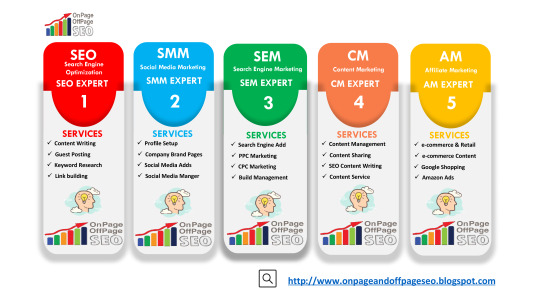
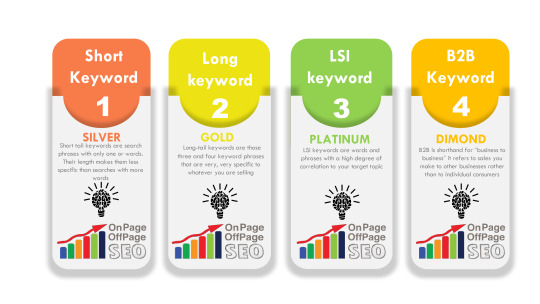
SEO services are services typically offered by an SEO agency that helps your company reach search engine optimization. With SEO, your business wants to extend its visibility in search results on search engines like Google and Bing. You specifically target search results associated with your company, products, services, or industry.
SEO services that SEO agencies offer:
In the years since search engines like Google and Ask Jeeves launched, search engine algorithms have undergone numerous updates and innovations. That’s why many SEO companies offer specialized SEO services, helping businesses in specific (and competitive) industries succeed. inspect this video to find out what an SEO company does from one among our internet marketing experts.
1 note
·
View note
Link
1 note
·
View note
Photo
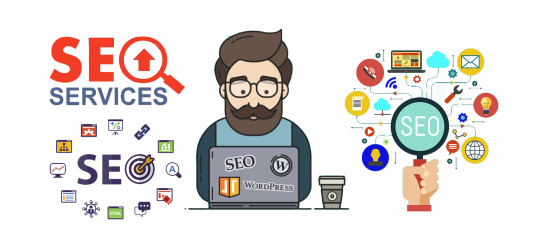



0 notes
Text
Best SEO service provider company in Bangladesh|On-page and off-page SEO

SEO services are services typically offered by an SEO agency that helps your company reach search engine optimization. With SEO, your business wants to extend its visibility in search results on search engines like Google and Bing. You specifically target search results associated with your company, products, services, or industry.
SEO services that SEO agencies offer:
In the years since search engines like Google and Ask Jeeves launched, search engine algorithms have undergone numerous updates and innovations. That’s why many SEO companies offer specialized SEO services, helping businesses in specific (and competitive) industries succeed. inspect this video to find out what an SEO company does from one among our internet marketing experts.
A few samples of a number of the foremost common SEO marketing services include:
Local SEO National SEO International SEO
For many companies, traditional SEO services provide everything you would like to succeed. If you’re an area or e-commerce store, however, local and e-commerce SEO services offer a competitive advantage which will maximize the impact of your SEO strategy.
0 notes

